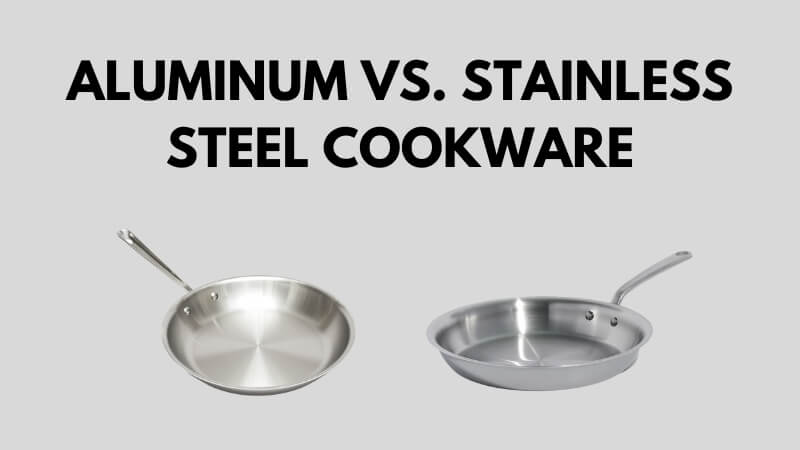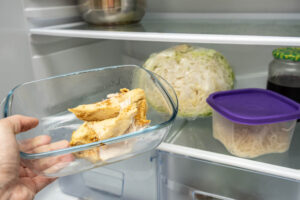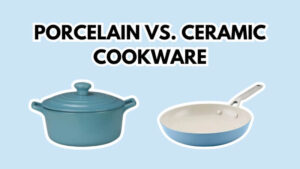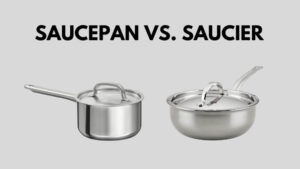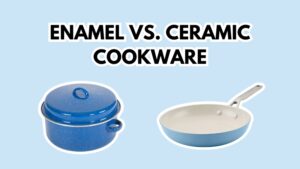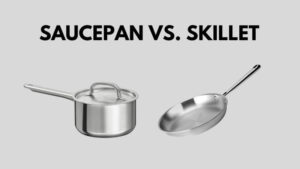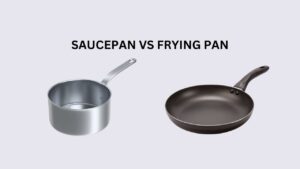Choosing the right cooking utensil is essential for achieving delicious meals, and when it comes to options, aluminum and stainless steel are two of the most common. Both have strengths, but selecting the right one can make a huge difference in your cooking experience. Let’s explore the aluminum vs stainless steel cookware differences and weigh the pros and cons of each to determine which is the best fit.
Key Differences of Aluminum vs Stainless Steel Cookware
Appearance
Aluminum utensils often come in a variety of finishes and colors, making it a great option for those who value a splash of personality in their kitchen.
In contrast, stainless steel pots and pans don’t come in many colors. They are limited to metallic shades with polished or brushed finishes. While this may be a bit boring for some, it can still complement most kitchen designs, from modern to traditional.
Durability
Stainless steel is resistant to scratching, denting, and rust, making it ideal for daily use. It can last for decades if properly maintained and does not easily warp under high heat.
Aluminum material is less durable. It is prone to scratching and can easily become dented or warped with frequent use. Anodized aluminum is a more durable option. But even so, it is not as long-lasting as stainless steel.
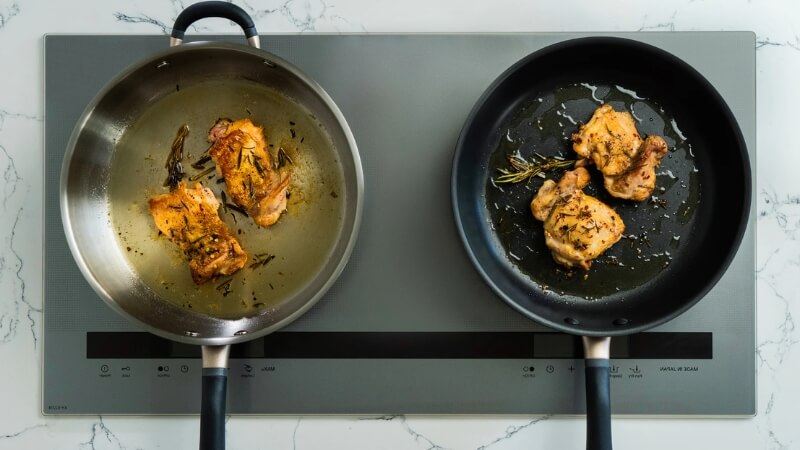
Heat conductivity
One of the main differences between aluminum and stainless steel is how they conduct heat. Aluminum heats up quickly but does not retain heat well, making it suitable for delicate dishes that need precise temperature control, like sauces or eggs.
Pure stainless steel has poor heat conductivity, but many cookware brands use multi-ply construction (clad stainless steel) with aluminum or copper cores to enhance heat distribution. This offers the durability of stainless steel with the efficient heat conduction of aluminum.
Cooking performance
Aluminum heats up quickly, but it is not ideal for high-heat applications like frying or sautéing. Stainless steel or cast iron performs better for these tasks due to their superior heat retention and stability.
Stainless steel, with its heavier construction and stable temperature, is better suited for slow cooking, braising, or simmering. Its resistance to food reactions means you can cook a wider range of dishes without worrying about altering their flavors.
Price
Aluminum cookware is typically more affordable than stainless steel. Non-anodized aluminum cookware is generally inexpensive, while anodized aluminum cookware can be comparable in price to stainless steel due to its enhanced durability.
Stainless steel cookware tends to be more expensive upfront. However, its durability makes it a worthwhile investment for those who want pots and pans that can handle daily use for years. While stainless steel has a higher upfront cost, it offers excellent value over time.
User Experience
Food release
Nonstick aluminum cookware is great for cooking foods like eggs, pancakes, or fish. However, uncoated aluminum can cause food to stick, making cooking these items more challenging.
Unlike aluminum, stainless steel cookware doesn’t have coatings like nonstick pans, so they are less forgiving if your technique isn’t spot-on.
Related content: Stainless Steel Cookware vs Nonstick: Which is Better?
Versatility and compatibility
Most standard aluminum cookware is not induction-compatible unless it has a magnetic base. However, cast aluminum cookware is oven-safe and can withstand higher temperatures.
On the other hand, stainless steel is compatible with all stovetop types, including induction, thanks to its magnetic properties. Additionally, many stainless steel pieces are oven-safe, withstanding high temperatures that make them suitable for searing, roasting, or broiling.
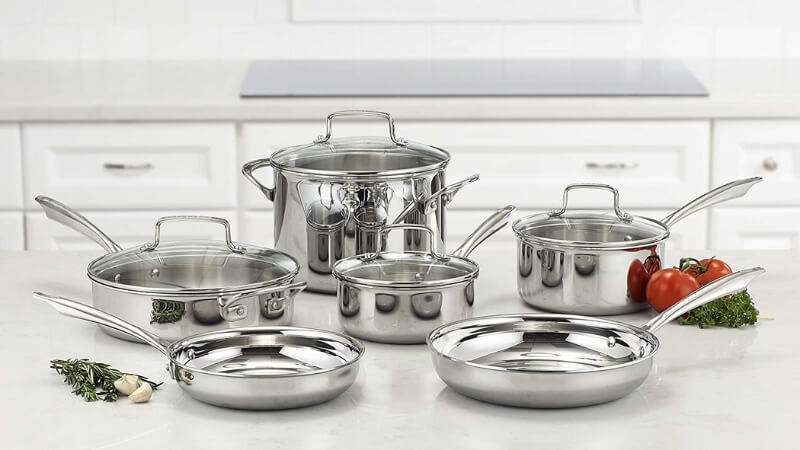
Pros and Cons of Aluminum vs Stainless Steel Cookware
| Pros | Cons |
|---|---|
| Aluminum cookware | |
| Heats up quickly and distributes heat evenly, making it ideal for precise cooking. | Non-anodized aluminum can warp, scratch, or dent over time. |
| Many aluminum cookware pieces come with nonstick coatings for easier cooking and cleaning. | Non-anodized aluminum reacts with acidic and salty foods, which can leach aluminum into your meals. |
| Comes in many colors and finishes. | Nonstick coatings on aluminum cookware can wear out faster than other types of cookware. |
| Lower initial cost. | Typically not induction-compatible unless designed with a special base. |
| Pros | Cons |
|---|---|
| Stainless steel cookware | |
| Highly resistant to scratches, dents, and rust, offering decades of use. | Pure stainless steel has poor heat conductivity unless designed with a layered base. |
| High-quality stainless steel is generally safe and non-reactive. | Without proper techniques, like preheating and using sufficient oil, food can stick to the surface. |
| Compatible with all stovetops, including induction, and usually oven-safe. | Typically more expensive upfront, though its durability offsets this in the long run. |
Best American Dishes to Cook with Aluminum and Stainless Steel Cookware
Choosing the right cookware can elevate your cooking, especially when making classic American dishes. Aluminum cookware heats up quickly and distributes heat evenly, making it perfect for pancakes, scrambled eggs, and grilled cheese sandwiches, where precise temperature control is key. It’s also great for stovetop mac and cheese, sautéed vegetables, and creamy sauces, ensuring smooth textures without burning.
On the other hand, stainless steel cookware excels at high-heat cooking and heat retention, making it ideal for searing steaks, frying chicken, and oven-roasting meats like turkey and chicken. Its durability and non-reactive surface also make it the go-to choice for one-pot pasta dishes, chili, and slow-simmered soups, where steady heat is essential.
If you love quick, everyday meals, aluminum cookware is lightweight and easy to use. For deep flavors and professional-level browning, stainless steel delivers the best results. Having both in your kitchen ensures you’re prepared to cook anything from a hearty breakfast to a gourmet steak dinner.
Conclusion
Both aluminum and stainless steel cookware have their pros and cons. If you prioritize quick heating and lightweight design, anodized aluminum is a great choice. If you prefer long-lasting durability and compatibility with all cooking methods, stainless steel is a better option.
In terms of health safety, both materials are generally safe when used correctly. To minimize potential risks, use anodized aluminum or stainless steel with high-quality food-grade materials, and avoid overheating or scratching cookware surfaces.

